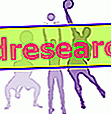
To improve the anticipation, the evaluation of the trajectories, the ability and the speed of the movements it is necessary to position oneself in such a way that the body is under the ball (as it is represented in the figure below, which also indicates the vector representation of the position of the thumb and the index).

PALLEGGIO TECHNICAL SHEET
The technical model on which the dribble is based takes into account aspects such as the trajectory of the ball's arrival, the position of the lower and upper limbs, the position of the trunk, the dynamics of the execution of the dribble and the exit trajectories of the ball.
ARRIVAL OF BALL TRAJECTORIES
The laws that regulate the ball's trajectory of arrival are determined by the direction and thrust of the ball impressed. In this sense we must position the body in such a way that the ball is above the head and in front of the forehead. We must therefore work on spatial-temporal organization skills and recognize the correct position of contact with the ball. It is also necessary to perceive the different points of the trajectory and to regulate one's own movement based on the movement of the ball.
The trajectory of arrival of the ball and the relative displacements can be: forward, backward, lateral, or a combination of the three previous movements.
LOWER LIMBS
Before raising the ball, the setter must assess the ball's trajectory, then move quickly and finally position itself under the ball. To go to the net, it is more convenient that the setter uses slipped steps, side steps approached, or crossed passes.
The first thing on which we have to work with the lower limbs is the displacements, that is the translocation of the body from one point to another of the playing field. The shift allows you to quickly assume a certain position to begin the next fundamental. The movements can be performed walking, running, jumping, or acrobatics.
Waiting position :
- legs slightly bent (bending of the lower limbs depends on the height of interception of the ball);
- feet apart one more than the other.
STARTING POSITIONS FOR CARRYING OUT THE MOVEMENTS AND PALLAGES
High position
It allows you to move easily in all directions of the field: the support is spread apart, the heels are in contact with the ground, the legs and torso are slightly semi-bent and the upper limbs are bent at the height of the belt.
Average position
It allows a greater thrust of the ball increasing its trajectory length.
The feet are positioned as in the high position, the leg-thigh angle is about 100 °, the torso is bent forward with a higher inclination than the upper position and the upper limbs are flexed forming an angle of about 140 °.
Low position
The low position is characterized by a greater closure of the aforementioned corners.
UPPER ARTS
The arms push the ball symmetrically and at the moment of impact are high and with the elbows flexed slightly above the shoulders and more open. The hands lie above the forehead completely open and the fingers slightly in tension. The impact must be made with all fingers.
Examples of exercises:
1) Make the ball bounce on the ground with one hand, first the right and then the left;
2) Bounce the ball consecutively on the ground wrapping it with all ten fingers without stopping it;
3) Like the previous one but against the wall from a close distance, about ten centimeters.
The various exercises must be proposed gradually, from easy to difficult, from slow to fast and so on.
TRUNK
The main function of the trunk is to support the movement of the upper and lower limbs during the whole pushing phase. His position must allow him to easily dribble forward or backward, following the direction of the ball.
Edited by: Lorenzo Boscariol
Bibliography



